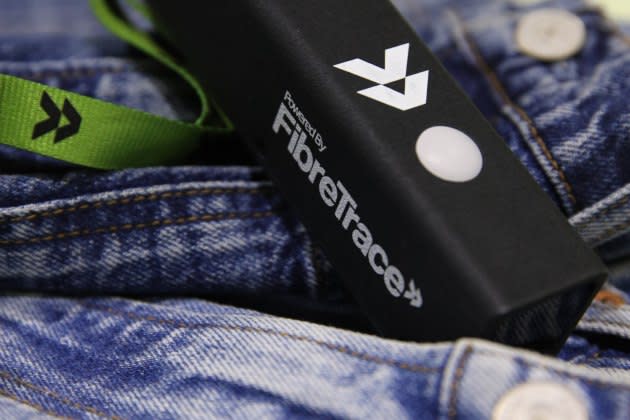EXCLUSIVE: FibreTrace Partners With Target Corp. and Cargill on Traceable Cotton

PARIS — Textile verification platform FibreTrace is joining forces with Target Corp. and Cargill for a new partnership to trace U.S. and Brazilian cotton in real time through the global supply chain.
Target Corp. will use FibreTrace’s technology, which adds a unique identifying luminescent pigment to raw fiber that can be followed from farm to shelf in real time, on 50,000 metric tons of Cargill cotton in the first year.
More from WWD
Moschino, Alberta Ferretti Parent Aeffe Becomes a Water Defenders Alliance Member
Authentico by Schneider Group Launches Innovative Wool Traceability System
Clothing and homewares products with FibreTrace cotton will hit Target shelves in early 2025.
Partnering with a major retailer can set a new standard for industry traceability, and demonstrates that it can be done at scale, FibreTrace founder Danielle Statham told WWD.
“What this partnership brings is a true testament…that we can really make improvements of our sourcing of cotton’s supply chain if we collaborate,” said Statham. “It’s a win-win from the grower all the way through to the consumer.”
“Achieving full visibility to where the cotton used to produce our products is grown is among the top priorities of our sustainability goals,” said Target senior vice president owned brands Bill Foudy. “Our partnership with FibreTrace and Cargill is an important step to improve traceability for the industry and will enable us to accelerate those efforts with our suppliers.”
Statham, who founded FibreTrace in 2018, said that one of the main goals with starting the company was to “shift the mindset of how cotton is purchased” and to shed light on the often opaque global supply chain.
Bringing on a major player like Cargill, the largest privately held company in the U.S., is an opportunity for a major industry shift. Cargill operates a global network of ginning, warehousing and merchandising operations for cotton.
“Cargill sees the bigger picture,” Statham said of the industrial and agricultural conglomerate. “And with Target as a brand [creating] products by 2025, it shows that there is a will to do good for the customer. To be able to do this at scale, it is really instrumental for change within our industry,” she added.
Using the FibreTrace-identified cotton is meant to help Target Corp. hit its defined sustainability goals. The company set out to reduce its absolute GHG emissions across Scopes 1 to 3 by 30 percent by 2030, with a 2017 baseline. Scope 3 includes emissions generated from the entire supply chain, including manufacturers and farmers.
Traceability is the first step in any emissions reduction strategy, added Statham.
“For understanding their supply chain and where their focus needs to go, traceability is number one. When we start talking about environmental risk, we need to understand right from the grower where our fibers are coming from,” she said. “It’s very nuanced. If you can crack cotton, you can pretty much crack any other fiber.”
FibreTrace’s embedded luminescent pigment is followed through the blockchain and is designed to keep a physical connection from farm to garment with full transparency.
Much of the industry is still in an exploratory phase as players seek to better understand their supply chains, Statham added.
FibreTrace is currently working with 15 brands publicly and several large enterprise brands behind the scenes, with more partnerships to be announced by the end of the year.
“Everyone is treading with caution, dipping their toe in, understanding their pledges, understanding their corporate goals and risks,” she said. Brands are also looking at establishing better metrics on materials as they travel through various producers.
Cotton is the “low hanging fruit” of fibers, she said, as it is one of the easiest with which to understand both environmental and location-based risks. Partnerships such as the Target-Cargill tie-up will also increase visibility for consumers, she added.
“For the next generation, people want to know where [fibers] are coming from. And we need to communicate that message,” she said.
“Brands have been very positive about what they need to do to empower their customer to continue to buy their products,” she added. “They are very positive about working towards [their] goals and they know they have to communicate this message.”
FibreTrace started discussions with Target Corp. shortly after its founding in 2018. Statham emphasized that with new technology it takes time for brands to understand how to integrate it into their existing systems.
“From what we’ve been able to prove through the Cargill and Target collaboration is that this is achievable, to make a difference at scale,” she said.
Best of WWD

 Yahoo Finance
Yahoo Finance 